1. 4. Recency - the time lag between communications produced by industrial media can be long (days, weeks, or even months) compared to social media (which can be capable of virtually instantaneous responses; only the participants determine any delay in response). As industrial media are currently adopting social media tools, this feature may well not be distinctive anymore in some time.
2. Определение
2.1. Социальные
2.1.1. Связанность с другими людьми
2.1.2. интерактивность
2.1.3. коммуникации
2.2. Медиа
2.2.1. Посредник
2.2.2. Средство коммуникации
2.2.3. Среда
2.2.4. Поле
2.3. Особенности
2.3.1. интерактивность - real time
2.3.2. каждый человек может стать автором
2.3.3. диалог
2.4. Булат
2.4.1. Интерактивные средства коммуникации заполненые информацией от коммуницирующих
2.5. Саша
2.5.1. Коммуникационное поле (среда)
2.6. Дворкин
2.6.1. Социальные медиа это такие среды распространения информации в которых основой является связь человека с другими людьми
2.7. WEB 2.o
3. У компании есть функции, которые могут быть решены через SM
3.1. PR
3.2. Marketing
3.3. Customer service
3.3.1. Сбор обратной связи с пользователей
3.3.2. Даём обратную связь + рекомендации
3.3.2.1. Panasonic
3.3.2.2. Akado
3.3.2.3. Beeline
3.4. Prod. devel
4. Кто с ними работает?
4.1. Агентства
4.1.1. sterno.ru
4.2. Продакшн
4.2.1. smopro.ru
4.3. собственные менеджеры брендов
4.4. Фрилансеры
4.5. Мелкие отряды
5. Дворкин
6. Возможности работы
6.1. Инструменты
6.2. SMM
6.3. SMO
6.4. DM
6.5. new media
7. Wiki
7.1. Social media can be said to have three components;
7.1.1. 1. Concept (art, information, or meme).
7.1.2. 2. Media (physical, electronic, or verbal).
7.1.3. 3. Social interface (intimate direct, community engagement, social viral, electronic broadcast or syndication, or other physical media such as print).
7.2. Common forms of social media;
7.2.1. * Concepts, slogans, and statements with a high memory retention quotient, that excite others to repeat.
7.2.2. * Grass-Roots direct action information dissemination such as public speaking, installations, performance, and demonstrations.
7.2.3. * Electronic media with 'sharing', syndication, or search algorithm technologies (includes internet and mobile devices).
7.2.4. * Print media, designed to be re-distributed.
7.3. July 2006.[2] At that time, this Wikipedia article on "social media" defined it as a term "used to describe media which are formed mainly by the public as a group, in a social way, rather than media produced by journalists, editors and media conglomerates."
7.4. properties
7.4.1. 1. Reach - both industrial and social media technologies provide scale and enable anyone to reach a global audience.
7.4.2. 2. Accessibility - the means of production for industrial media are typically owned privately or by government; social media tools are generally available to anyone at little or no cost.
7.4.3. 3. Usability - industrial media production typically requires specialized skills and training. Most social media do not, or in some cases reinvent skills, so anyone can operate the means of production.
7.4.4. 5. Permanence - industrial media, once created, cannot be altered (once a magazine article is printed and distributed changes cannot be made to that same article) whereas social media can be altered almost instantaneously by comments or editing.

